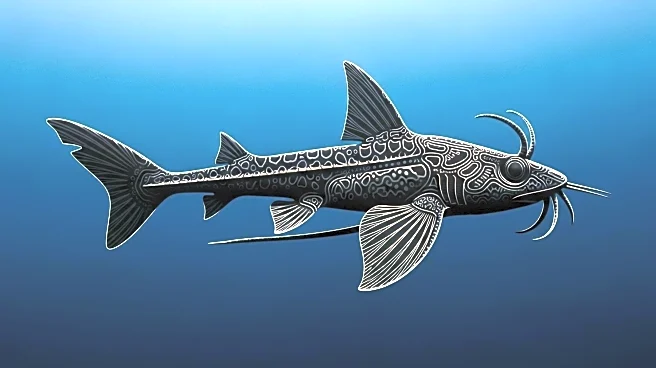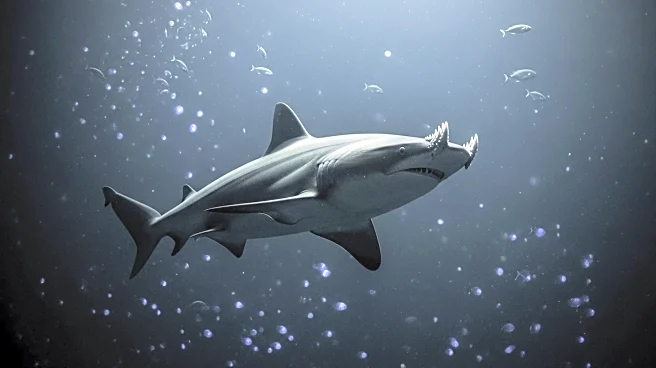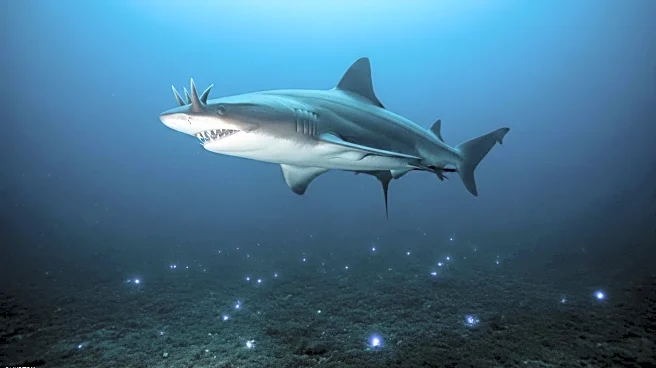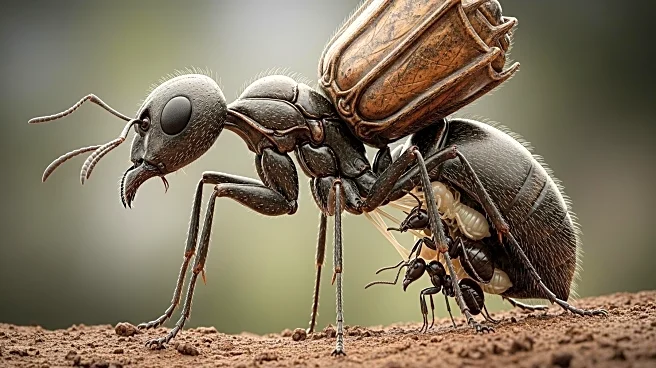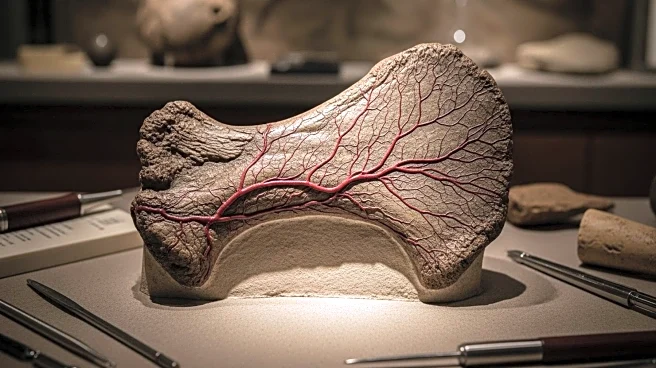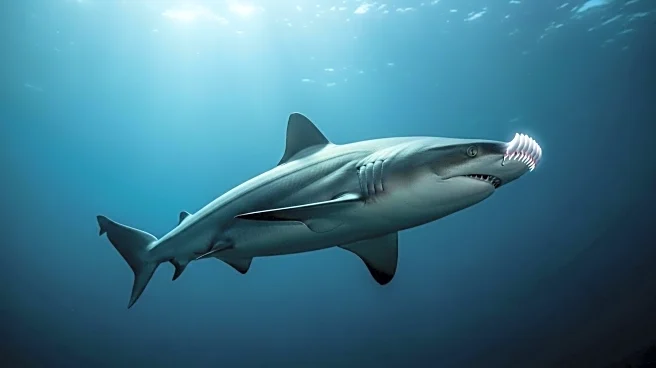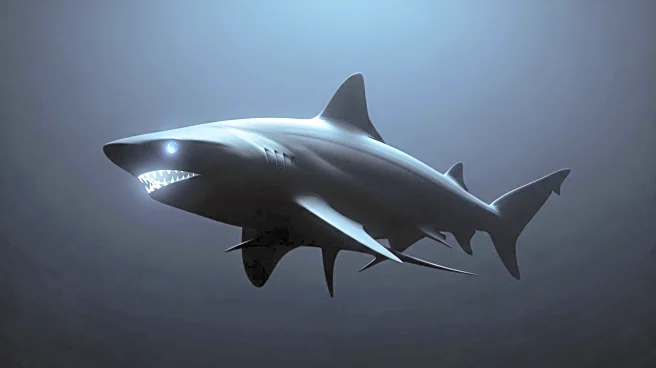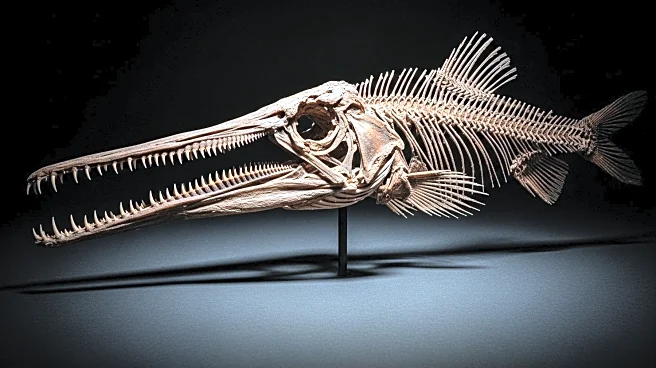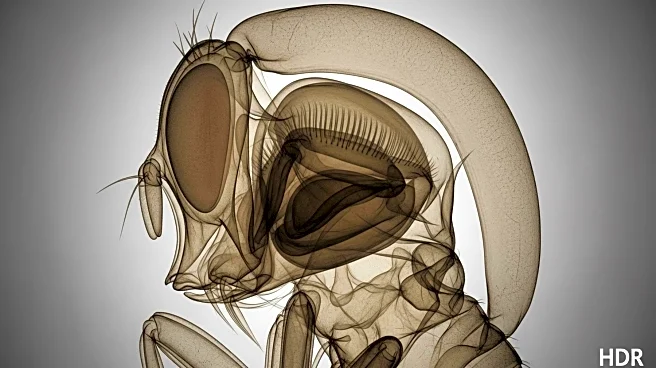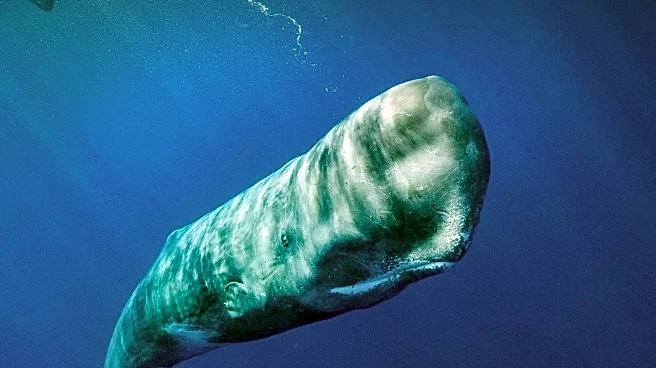What's Happening?
A recent study published in the Proceedings of the National Academy of Sciences explores the unique mating adaptations of the ratfish, also known as chimaeras or ghost sharks. These deep-sea creatures possess a tenaculum, a clublike appendage on their forehead, used to grip the female's pectoral fin during mating. The tenaculum is covered with structures resembling teeth, a feature that has intrigued biologists. The study provides insights into the evolutionary development of these forehead teeth, which are similar to shark jaws.
Why It's Important?
The findings offer significant contributions to the understanding of evolutionary biology and the diversity of reproductive strategies in marine life. By uncovering the unique adaptations of the ratfish, scientists can gain a deeper understanding of evolutionary processes and the ecological roles of these species. This research may also inform conservation efforts by highlighting the importance of preserving diverse marine ecosystems. The study exemplifies the ongoing exploration of the ocean's depths, which continues to reveal new and fascinating biological phenomena.
